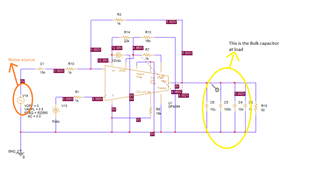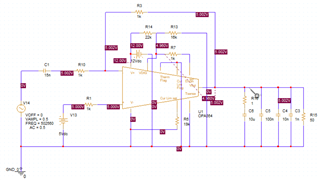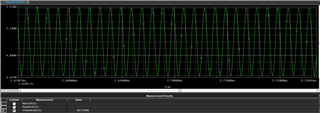Other Parts Discussed in Thread: TINA-TI
I am using OPA564 as inverting summing amplifier with unity gain. We have three inputs like noise), spike and glitch sources at inverting terminal and we have an voltage source 5V at non inverting for providing the offset. My load has large capacitor of 10u, 100n,10n & 1n and load current of around 150ma. In Most cases only one of the inverting input is provided to the Opamp so while I was providing noise input 500KHZ at 0.5Vpp I can only see very small amplitude swing at 5V offset. Also when I provide 50KHZ at 0.5Vpp I can see the noise for some time and then Opamp output goes down to 0 and again switch back to noise amplitude. But it works fine when we are providing the input noise only with load and without the large capacitors.
is this because the Opamp goes to instability due to the large capacitor or some other issue







